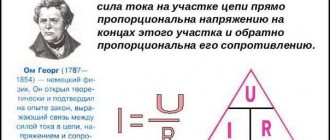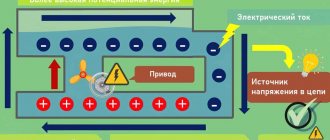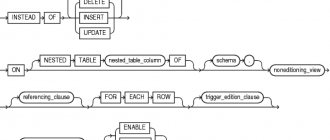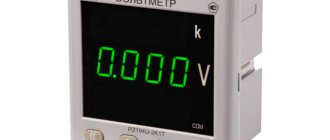In order to obtain high-quality and beautiful soldering, it is necessary to correctly select the power of the soldering iron and ensure a certain temperature of its tip, depending on the brand of solder used. I offer several circuits of homemade thyristor temperature controllers for soldering iron heating, which will successfully replace many industrial ones that are incomparable in price and complexity.
Attention, the following thyristor circuits of temperature controllers are not galvanically isolated from the electrical network and touching the current-carrying elements of the circuit can lead to electric shock!
To adjust the temperature of the soldering iron tip, soldering stations are used, in which the optimal temperature of the soldering iron tip is maintained in manual or automatic mode. The availability of a soldering station for a home craftsman is limited by its high price. For myself, I solved the issue of temperature regulation by developing and manufacturing a regulator with manual, stepless temperature control. The circuit can be modified to automatically maintain the temperature, but I don’t see the point in this, and practice has shown that manual adjustment is quite sufficient, since the voltage in the network is stable and the temperature in the room is also stable.
Classic thyristor regulator circuit
The classic thyristor circuit of the soldering iron power regulator did not meet one of my main requirements, the absence of radiating interference into the power supply network and the airwaves. But for a radio amateur, such interference makes it impossible to fully engage in what he loves. If the circuit is supplemented with a filter, the design will turn out to be bulky. But for many use cases, such a thyristor regulator circuit can be successfully used, for example, to adjust the brightness of incandescent lamps and heating devices with a power of 20-60 W. That's why I decided to present this diagram.
In order to understand how the circuit works, I will dwell in more detail on the principle of operation of the thyristor. A thyristor is a semiconductor device that is either open or closed. to open it, you need to apply a positive voltage of 2-5 V to the control electrode, depending on the type of thyristor, relative to the cathode (indicated by k in the diagram). After the thyristor has opened (the resistance between the anode and cathode becomes 0), it is not possible to close it through the control electrode. The thyristor will be open until the voltage between its anode and cathode (labeled a and k in the diagram) becomes close to zero. It's that simple.
The classical regulator circuit works as follows. AC mains voltage is supplied through the load (incandescent light bulb or soldering iron winding) to a rectifier bridge circuit made using diodes VD1-VD4. The diode bridge converts alternating voltage into direct voltage, varying according to a sinusoidal law (diagram 1). When the middle terminal of resistor R1 is in the extreme left position, its resistance is 0 and when the voltage in the network begins to increase, capacitor C1 begins to charge. When C1 is charged to a voltage of 2-5 V, current will flow through R2 to the control electrode VS1. The thyristor will open, short-circuit the diode bridge and the maximum current will flow through the load (top diagram).
When you turn the knob of the variable resistor R1, its resistance will increase, the charging current of capacitor C1 will decrease and it will take more time for the voltage on it to reach 2-5 V, so the thyristor will not open immediately, but after some time. The greater the value of R1, the longer the charging time of C1 will be, the thyristor will open later and the power received by the load will be proportionally less. Thus, by rotating the variable resistor knob, you control the heating temperature of the soldering iron or the brightness of the incandescent light bulb.
Above is a classic circuit of a thyristor regulator made on a KU202N thyristor. Since controlling this thyristor requires a larger current (according to the passport 100 mA, the real one is about 20 mA), the values of resistors R1 and R2 are reduced, R3 is eliminated, and the size of the electrolytic capacitor is increased. When repeating the circuit, it may be necessary to increase the value of capacitor C1 to 20 μF.
Thyristors and triacs
Introduction
Thyristors and triacs are key semiconductor elements that can be in one of two stable states - conducting (open) and non-conducting (closed).
The transition from a non-conducting to a conducting state is carried out by a relatively weak constant or pulsed signal. These properties determine the main purpose of thyristors and triacs as key elements for switching currents in the load. Unlike contact switches - electromechanical relays, starters and contactors - thyristors and triacs carry out contactless switching of current in the load with all the ensuing positive consequences.
Thyristors in the open state conduct current only in one direction, triacs - in two. Thus, one triac can replace two back-to-back thyristors. Therefore, solutions based on triacs seem to be more economical.
Contact and non-contact current switching
Before moving on to consider the principles of operation of thyristors and triacs and their main characteristics, let us compare contact (electromechanical relays, starters, contactors) and non-contact (thyristors and triacs) methods of current switching, the advantages and disadvantages of each of them.
Resource, number of switchings
The number of switchings of semiconductor switches is practically unlimited. The durability of semiconductors is determined by differences in operating temperatures: the number of cycles and their amplitude.
Relays, and especially electromagnetic starters, have a limited switching resource. There is a distinction between mechanical life (mechanical wear resistance in the absence of current through the contacts), which for modern relays is 1-2 million switchings, and switching wear resistance at maximum load, which is 10-100 times lower. For evaluation, we point out that with continuous operation and a switching period of 10 s, the resource is exhausted in 2 weeks, with a switching period of 5 minutes - in 1 year. It immediately follows that the use of contact switches is justified only for rare load switching (from periods greater than 10 minutes).
Switching frequency
Semiconductor switches allow load switching at each half-cycle of the mains voltage.
Note: In special circuit solutions that use forced closing of elements, the switching frequency can be even higher.
Electromechanical devices, in addition to the number of switching cycles, have another important negative property - the low switching frequency of the load circuit. It is determined both by the mechanical properties of the relay and by the fact that as the frequency of switching increases, the relay begins to overheat. It was noted above that if it is necessary to switch electromechanical devices with short periods, the service life of these devices will be short.
In addition, mechanics are moving parts. And moving parts are always a source of increased risk: abrasion of axes, increased backlash, general loosening of the mechanism up to loss of functionality, etc.
Sparking
Contactless switches, by definition, do not spark.
Switching using electromechanical devices is inevitably accompanied by sparking, which, on the one hand, leads to burnt contacts and reduced service life, and on the other, causes strong high-frequency electromagnetic interference, which can lead to malfunctions of measuring and microprocessor devices.
Electromagnetic interference
In order not to create electromagnetic interference that occurs when switching high currents (conductors with rapidly changing currents work like ordinary antennas), it is advisable to carry out switching at times when these currents are minimal (ideally equal to zero). Semiconductor switches, thanks to the ability to control the switching moment, allow the use of solutions in which switching is carried out at moments of zero current in the network.
Contact switching, as a rule, is carried out at arbitrary times, and therefore at moments of maximum current values. Accordingly, contact switching is accompanied by strong electromagnetic interference. As a result, the stability of the control and measurement systems is reduced.
Losses on the switching element
The voltage drop across an open triac is 1-2 V and depends little on the flowing current. As a result, relatively large power is released on an open triac. For example, at a current of 40 A, 40-80 W of heat is released on the triac, which must be removed. Radiators are used for this. This circumstance is the most serious disadvantage of contactless switches, since it requires additional space for the radiator and makes the solution more expensive.
A certain power is also released at the contacts of relays and starters, but it is less than that of triacs. However, it should be borne in mind that as the contacts burn, the heat generated increases. To combat this phenomenon, regular cleaning of contacts or replacement of the entire device is required. All this leads to increased operating costs. In addition, it is necessary to take into account the heat generation due to the passage of current through the winding when the switch is on.
Economic Considerations
When considering the feasibility of using contact or non-contact switching methods, it is necessary, in addition to the purely technical advantages of one or another method, to take into account the following economic considerations.
On the one hand, contact switches, as a rule, are much cheaper than contactless devices, especially when combined with radiators.
On the other hand, the resource of contactless switches is practically unlimited; device maintenance is not required. Contact switches have a limited resource and require routine maintenance and regular replacement during their service life. As a result, operating costs increase, and the reliability of systems that use contact switches with short switching periods decreases.
Principle of operation
Thyristors and triacs belong to the family of semiconductor devices, the properties of which are determined by the presence in the semiconductor wafer of adjacent layers with different types of conductivity.
As noted above, a simplified triac is two thyristors connected in parallel towards each other. Therefore, for simplicity, we will explain the principle of operation using the example of a thyristor. Each thyristor? This is a device with a four-layer pnpn structure. The thyristor is shown schematically in Fig. 1.
Rice. 1
The outermost region of the p-structure, to which the positive pole of the voltage source is connected, is called the anode (A), the outermost region of the n-type, to which the negative pole of the source is connected, is called the cathode (K). The output from the internal region is a p-control electrode.
In Fig. Figure 2 shows a thyristor model in the form of a circuit with two transistors with different types of conductivity. The base and collector of transistor VT1 are connected, respectively, to the collector and base of transistor VT2. As a result, the base of each transistor is powered by the collector current of the other transistor. A positive feedback circuit is formed in the circuit.
Rice. 2
If there is no current Iу through the control electrode, then both transistors are closed and no current flows through the load - the thyristor is closed. If a current Iу is applied above a certain level, then an avalanche-like process begins in the circuit due to positive feedback and both transistors open - the thyristor opens and remains in this stable state, even if the current Iy is no longer supplied.
Thus, the thyristor can be controlled with both direct current and pulsed current. In order to transfer the thyristor to a non-conducting state, it is necessary to reduce the current through it to such a level at which the feedback can no longer keep the circuit in a stable open state. This is the so-called holding current.
Current-voltage characteristics of a thyristor and triac
First, let's look at the typical current-voltage characteristic (volt-ampere characteristic) of a thyristor, shown in Fig. 3.
Rice. 3
The voltage between the anode and the cathode is plotted along the horizontal axis, and along the vertical axis? current flowing through the device.
The variable parameter of the family of characteristics is the value of the current Iу in the control electrode circuit.
On the current-voltage characteristic of the thyristor, four characteristic sections can be distinguished, marked in Fig. 3 Latin letters ABCDE. Additionally in Fig. Figure 3 shows load lines I, II, III for various network voltages.
Section AB corresponds to the opposite characteristic when a negative voltage is applied to the anode of the thyristor relative to the cathode. When the control circuit is open or there is no current in it (Iу = 0), the reverse characteristic of the thyristor is similar to the reverse I-V characteristic of a semiconductor diode. In the operating voltage range UZS from 0 to the maximum operating voltage, called the reverse repeating voltage Urevt, rev max, a very small current, on the order of fractions of a milliampere, flows through the device (operating point 1).
The direct branch of the thyristor is depicted in the first quadrant of the coordinate system. It corresponds to the voltage polarity when a voltage positive relative to the cathode is applied to the anode.
In segment BC, up to the switching voltage Up, Pr max, the thyristor with zero control current is closed and the current through it does not exceed 5-15 mA (operating point 2). The transition to the open state (to operating point 3 in section DE) is possible in two ways. The first method is to increase the voltage on the thyristor, so that the operating point reaches point C. In this case, the operating point jumps to section DE. This thyristor switching mode is rarely used. The traditional way to open a thyristor is to supply a control current. As a result, the BCD curve on the I-V characteristic is straightened and the operating point also falls on the DE section corresponding to the open state of the thyristor.
The family of current-voltage characteristics for different control currents shows that at different voltages on the thyristor, different control currents are required to turn on the thyristor: small control currents at high voltages and large currents at low voltages. With a control current equal to IUS, the direct branch of the thyristor’s I-V characteristic also coincides with the I-V characteristic of the semiconductor diode.
Note that the DC section characterizes the unstable state of the thyristor. This area is called the area with negative electrical resistance. From there, the thyristor always goes into the open state with low electrical resistance (to the DE section).
The working section DE corresponds to the open state of the triac and is characterized by a small voltage drop across the device Uoc at a high current Ioc.
This characteristic region is similar to the forward branch of the characteristic of a semiconductor diode. Voltage Uoc, depending on the properties of the semiconductor structure, is 1-2 V and weakly depends on the magnitude of the flowing current Ioc. At the thyristor transition, power is released, which can be estimated as (1…2) Ioc. After the current passing through the thyristor drops below the holding current value Isp, the thyristor closes.
Actually, this is the most useful property of a thyristor, triac and other devices with negative reverse resistance: switched to a state with low resistance, they remain in this state for an indefinitely long time, even after the control signal is removed, until the load current drops below the holding current . This allows you to control triacs and thyristors with short pulses of control voltage.
The current-voltage characteristic of a triac is very similar to the current-voltage characteristic of a thyristor, but since there is no direct or reverse switching direction for a triac, the curve is symmetrical about the center of coordinates. Each half of this curve resembles the thyristor turn-on curve in the forward direction.
One of the factors that makes a triac a better device for switching alternating current than a thyristor is that the device has the same properties when current flows through it in any direction. Like a thyristor, a triac turns off when the current through it tends to 0. This reduces induction and other induced currents and network noise caused by power outages at high voltage.
Control signals
Despite the fact that voltages of different polarities may be present on thyristors and triacs, the preferred control voltage polarity for these semiconductor devices is one that matches the polarity of the voltage at the anode.
Thus, to ensure guaranteed performance and maximum efficiency, the control signal must change its polarity at each half-wave of the load's alternating current. Accordingly, the triac control system must be “able” to change the polarity of the control signal depending on the direction of movement of the switched current.
When generating a control signal, it must be borne in mind that it must have a certain finite duration greater than timp. min.. If the control signal is shorter than tpul. min., then the triac may not have time to transition to a stable open state and return to its original closed state. Usually timp. taken equal to 50 μs. This is enough to turn on most triacs.
Basic parameters of triacs
Let us immediately note that all characteristics of triacs strongly depend on the operating temperature of the pnpn structure. As a rule, two values are indicated - at a temperature of 25-30 ° C and at the upper limit of the operating range. The parameter values at intermediate points are calculated according to a linear law. For triac blocks produced by KontraAvt, parameter values are indicated for 30 °C and 50 °C.
The strong heat generation is caused by the fact that a fully open triac in the operating range always maintains a voltage drop of about 1-2 V, regardless of the load current. In Fig. 3 it corresponds to the value of Uos. Thus, the triac must always dissipate power into the environment. As already noted, with a load current of 40 A, the triac should dissipate about 60-80 W, while remaining within the operating temperature range. Therefore, a triac, unlike relays and other electromechanical switching devices, is unthinkable without a radiator, the larger the more power it switches.
Open State Options
Thyristors and triacs in the open state are characterized by a voltage Uoc equal to 1-2 V and practically independent of the open state current.
The maximum permissible effective current Ioc, d characterizes the switching capacity of the semiconductor element. The maximum permissible effective current Ioc, d and shock current Ioc, beat (short-range pulse of high current, lasting no more than 20-50 ms) also depend on the temperature of the triac case. It should be noted that the shock current Ioc, d can exceed the maximum permissible effective current Ioc, d several times. This circumstance should be taken into account when calculating various circuits for protecting semiconductor devices from short circuits.
Another important parameter is the holding current Iud - the minimum load current up to which the triac maintains its open state. After the load current drops below this value, the triac will close.
Closed state options
In the closed state, the triac does not switch the load until the voltage at the power electrodes exceeds Urev, etc. max (Fig. 3). After this voltage is exceeded, the triac switches to the open state. This parameter is extremely important when switching circuits with high noise or inductive loads. For example, when a triac turns off the power supply to a high-power inductive load, a self-inductive emf with high voltage appears in it. If this voltage exceeds Urev, etc. max, then uncontrolled opening of the triac is possible. Therefore, such circuits are usually bypassed with RC circuits that filter the corresponding emissions.
Also important is the parameter UЗС - a sinusoidal “safe” voltage, at which spontaneous (Iу=0) switching on is impossible.
There is another case of spontaneous activation of a triac in the closed state. This can happen when the rate of increase in the switching voltage exceeds a certain critical value (dU/dt)com. This undesirable effect is due to the capacitive current in the central junction of the pnpn structure. At high rates of current rise, a charge sufficient to turn on the triac has time to accumulate on the parasitic capacitance of the pn junction of the control electrode.
This phenomenon should be taken into account when cascading several triacs, used to increase the load capacity of the circuit. If the main switching element is very fast, then turning it off in circuits with inductance can cause such rapid voltage changes that in turn cause false triggering of low-power control triacs. As a result, the circuit “cannot” turn off even in the absence of a control signal.
Control options
The unlocking direct control current Iу, otp (in Fig. 3 is designated as I3) characterizes the minimum value of the control current at which the triac completely opens.
Unlocking constant control voltage Uу, from ? the voltage that forms Iу, otp, i.e., the control voltage at which the triac is guaranteed to go into the open state.
Non-unlocking constant control voltage Uу, Note - the voltage up to which the triac is guaranteed to be in the closed state. This parameter is extremely important when using a triac in circuits with a high level of noise. If the interference exceeds this parameter, the triac may open. One of the options for such interference was discussed above - inductance in the circuit.
One of the most important parameters - the turn-on time (ton) - determines the time interval during which the triac switches from a closed state to a fully open state in the presence of an unlocking control pulse (≥Uу, otp). In fact, it determines the minimum duration of the control signal required to guarantee switching on.
(dIoc/dt)cr is the critical rate of current increase at the moment the triac opens. If the rate of current rise in a circuit exceeds the maximum permissible, then the effect of destruction of the structure occurs. It is due to the fact that physically the control electrode occupies a significantly smaller area on the crystal. When turned on, the control current is distributed unevenly across the crystal and does not open the entire area of pn junctions under the power electrodes. At low rates of current increase, the pn-junction has time to fully open, and at high rates, the pn-junction’s own volume resistance and capacitance are affected.
Thermal parameters
TP(MAX) and TP(MIN) - the maximum and minimum transition temperatures do not require any special explanation. In modern devices, the transition temperature can reach 125 °C. However, when operating at the junction, a large amount of heat is generated, which must be removed. The ability of devices to remove heat is characterized by such parameters as thermal resistance. A distinction is made between the thermal resistance of the junction-case contact and the thermal resistance of the case-cooler contact.
RT(P-K) - the thermal resistance of the junction-case contact determines the ability of the triac to transfer heat from the semiconductor to its case. The RT(P-K) parameter—the thermal resistance of the case-cooler contact—determines the dimensions and characteristics of the radiator required to remove the heat generated when switching a given power.
As a result, the device, mounted on a radiator, allows normal operation at temperatures significantly lower than the permissible junction temperature. In particular, the operating temperature of triac units produced by KontrAvt is limited to 50 °C.
In conclusion, we present a comparative table indicating the main characteristics discussed in this article. The data is given for three widely used triacs, which differ in permissible switching currents. The information presented allows us to get an idea of the characteristic values of the parameters of triacs.
We will talk about circuit design and the most common uses of triacs in the next issue.
Specifications
Table 1.
| TC112-10 | TC132-40 | TC152-160 | ||
| I os. d. (rms current value in open state, sinusoidal current, case temperature 85 °C), A | 10 | 40 | 160 | |
| Uзс (constant voltage in the closed state, over the entire permissible temperature range, sinusoidal voltage), V, for device classes: | ||||
| 2 | 200 | 200 | 200 | |
| 6 | 600 | 600 | 600 | |
| 12 | 1200 | 1200 | 1200 | |
| Ios, beats (shock current in the open state, sinusoidal current, single pulse t=20 ms, maximum permissible junction temperature), A | 70 | 250 | 1200 | |
| (dIoc/dt)cr (critical rate of current rise in the open state, single pulse t=20 ms, maximum permissible junction temperature), A/µs | 20 | 63 | 63 | |
| Tп(max) (maximum permissible transition temperature), °С | +110 | +125 | +125 | |
| Tп(min) (minimum permissible transition temperature), °С | -60 | -60 | -40 | |
| Uos, and (pulse voltage in the open state, sinusoidal current, single pulse t=20 ms, transition temperature 25 °C), V, no more | 1,65 | 1,85 | 1,65 | |
| Uoc, and (threshold voltage in open state, maximum transition temperature), V, no more | 1 | 1 | 1 | |
| Uу, from (unlocking constant control voltage, constant control current, Uзс=12 V), V, not more than: | ||||
| Tp=25 °С | 3,5 | 4,0 | 3,0 | |
| Tp=Tp(min) | 6,0 | 7,8 | 6,0 | |
| Uу, note (non-unlocking constant control voltage, constant control current, Uзс=0.67 Uзс, p), V, not less | 0,2 | 0,25 | 0,25 | |
| Iу, otp (unlocking direct control current, Uзс=12 V), mA, no more: | ||||
| Tp=25 °С | 75 | 200 | 150 | |
| Tp=Tp(min) | 230 | 550 | 400 | |
| Izc, p (repeating pulse current in closed state, maximum permissible junction temperature), mA, no more | 1,5 | 5,0 | 15,0 | |
| Iud (holding current, control circuit open, Tп=25 °С, Uзс=12V), mA, no more | 45 | 60 | 60 | |
| ton (switch-on time, Tп=25 °С, Uзс=100 V, Iос=Iос, d, rectangular control pulse shape, pulse duration 50 μs), μs, no more | 9,0 | 12 | 12 | |
| tzd (delay time, conditions are the same as for ton), μs, no more | 3,0 | 4,0 | 4,0 | |
| (dUзс/dt)com (critical rate of increase in switching voltage in the closed state, sinusoidal current, t=10 ms, Tп=Tп(max), Uзс=0.67 Uзс, p), V/µs, for classes: | ||||
| 2 | 4,0 | 4,0 | 4,0 | |
| 6 | — | 25,0 | 25,0 | |
| 8 | — | — | 100 | |
| RT(p-c) (thermal resistance of junction-case), °C/W, no more | 1,55 | 0,52 | 0,2 | |
Literature.
- Zi S. “Physics of semiconductor devices.” - M.: Mir, 1984.
- Yu. A. Evseev, S. S. Krylov. “Triacs and their use in household electrical equipment”, 1990.
- Zamyatin V. “Thyristors. To help the radio amateur: collection." Vol. 110.
- "Components and Technologies", 3 2004.
Source: SciTecLibrary.ru May 27, 2008, Authors: Alexey Kosterin, Ph.D., Director of NPF “KontrAvt” LLC, Alexey Dementyev, Head of the Advertising Sector
Comments ()
Write a comment
The simplest thyristor regulator circuit
Here is another very simple circuit of a thyristor power regulator, a simplified version of the classic regulator. The number of parts is kept to a minimum. Instead of four diodes VD1-VD4, one VD1 is used. Its operating principle is the same as the classical circuit. The circuits differ only in that the adjustment in this temperature controller circuit occurs only over the positive period of the network, and the negative period passes through VD1 without changes, so the power can only be adjusted in the range from 50 to 100%. To adjust the heating temperature of the soldering iron tip, no more is required. If diode VD1 is excluded, the power adjustment range will be from 0 to 50%.
If you add a dinistor, for example KN102A, to the open circuit from R1 and R2, then the electrolytic capacitor C1 can be replaced with an ordinary one with a capacity of 0.1 mF. Thyristors for the above circuits are suitable, KU103V, KU201K (L), KU202K (L, M, N), designed for a forward voltage of more than 300 V. Diodes are also almost any, designed for a reverse voltage of at least 300 V.
The above circuits of thyristor power regulators can be successfully used to regulate the brightness of lamps in which incandescent light bulbs are installed. It will not be possible to adjust the brightness of lamps that have energy-saving or LED bulbs installed, since such bulbs have electronic circuits built in, and the regulator will simply disrupt their normal operation. The light bulbs will shine at full power or flicker and this may even lead to their premature failure.
The circuits can be used for adjustment with a supply voltage of 36 V or 24 V AC. You only need to reduce the resistor values by an order of magnitude and use a thyristor that matches the load. So a soldering iron with a power of 40 W at a voltage of 36 V will consume a current of 1.1 A.
How to test a thyristor with a multimeter?
Let’s make a reservation right away - you can check the serviceability of a thyristor without a tester. For example, using a flashlight bulb and a AA battery.
To do this, we turn on in series the power source corresponding to the voltage of the light bulb, the operating terminals of the thyristor, and the light bulb.
When a control current is supplied (an AA battery is sufficient), the light will light. This means the control circuit is working properly. Then disconnect the battery without turning off the operating current source. If the pn junction is working properly and is set to a certain holding current value, the light bulb continues to light.
If you don’t have a suitable lamp and battery at hand, you should know how to test a thyristor with a multimeter.
- We set the tester switch to the “dialing” mode. In this case, sufficient voltage will appear on the wire probes to test the thyristor. The operating current does not open the pn junction, so the resistance at the terminals will be high and no current will flow. “1” is displayed on the multimeter display. We have made sure that the working pn junction is not broken;
- We check the opening of the transition. To do this, we connect the control terminal to the anode. The tester supplies enough current to open the junction, and the resistance drops sharply. Numbers other than one appear on the display. The thyristor is “open”. Thus, we checked the functionality of the control element;
- Open the control contact. In this case, the resistance should again tend to infinity, that is, we see “1” on the display.
Modern triac regulator circuit
Below is a modern circuit diagram of a triac power regulator. In order to understand the principle of operation of a power regulator on a triac, you need to imagine how it works.
Triacs, unlike thyristors, can operate not only in DC circuits, but also in AC circuits. This is their main difference. The triac also operates in key mode - either open or closed. To open the transition A1-A2, you need to apply a voltage of 2-5 V to the control electrode G relative to pin A1. The triac will open and not close until the voltage between terminals A1-A2 becomes zero.
The triac power regulator circuit operates as follows. AC mains voltage is supplied through the load (incandescent light bulb or soldering iron winding) to terminal A1 of triac VS2 and one of the terminals R2. When the middle terminal of resistor R2 is in the extreme left position, its resistance is 0 and when the voltage in the network begins to increase, capacitor C1 quickly charges. When C1 is charged to a voltage of 30 V, a breakdown of the dinistor VS1 occurs and the current flows to the control electrode G VS2 and the junction of the triac A1-A2 opens (graph 1).
When you turn the knob of variable resistor R2, its resistance will increase, the charging current of capacitor C1 will decrease and it will take more time for the voltage on it to reach 30 V. Therefore, the triac will open after some time. The greater the value of R2, the longer the charging time of C1 will be and the triac will open with a longer delay. This way, less energy will be supplied to the load.
The given classic circuit of a triac power regulator can also operate at a network voltage of 127, 24 or 12 V. It is only enough to reduce the value of the variable resistor. In the above circuit, the power is regulated not from 0 volts, but from 30, which is more than enough for practical use. This circuit was successfully repeated when repairing the electronic circuit for controlling the rotation speed of a blender motor.
The dv/dt effect and ways to combat it
The control signal for the triac is necessary only to turn it on (turning off occurs when the switched current decreases below the holding current), but at a high rate of change of the switched voltage dv/dt there is a possibility of the triac spontaneously turning on even in the absence of a control signal. For this reason, triac manufacturers indicate the maximum permissible dv/dt value at which uncontrolled triac activation does not occur. Exceeding the slew rate above the values specified in the documentation can lead to failure of the triac structures. The causes of unwanted switching on may be impulse noise in the load power supply circuits or voltage surges when a switch operating on an inductive load is activated. An effective way to solve this problem is to connect an RC snubber (damping) circuit in parallel with the output of the switching stage, as shown in Figure 5.
Rice. 5. Triac control with zero level switching and protection by snubber RC circuit
It is advisable to use a metal film polyester capacitor in the snubber circuit. Its value is selected within the range of 0.01...0.1 μF, the resistor resistance is from 20 to 500 Ohms. These values should be considered as guidelines only. Detailed design of snubber circuits can be found in On Semiconductor's AN1048/D application manual (“RC Snabber Networks for Thyristor Power Control and Transient Suppression”).
It is especially important to pay attention to ensuring acceptable operating modes of triacs when operating on an inductive load. Figure 6 shows voltage diagrams when the triac is operating on resistive and inductive loads. On an active load, the current through the triac is in phase with the output voltage. When operating on an inductive load, the current through the triac has a phase shift q (delay). Because of this, at the moments of switching at a zero current level, the voltage on the triac is not equal to zero (voltage surges appear). The most unpleasant moment occurs when turning off a triac operating an inductive load. At these moments, the rate of voltage rise on the dv/dt triac can reach unacceptably high values and damage the device if no protective measures are taken (RC snubber circuit, varistor, protective limiting diodes - suppressors).
Rice. 6. Voltage diagrams when the triac operates on active and inductive loads
To ensure switching of the triac at zero current level, you can use a circuit with optical isolation shown in Figure 5. The control circuit built into the optocouplers ensures reliable operation at zero current.
Thyristor circuit of the regulator does not emit interference
The main difference between the circuit of the presented soldering iron power regulator and those presented above is the complete absence of radio interference into the electrical network, since all transient processes occur at a time when the voltage in the supply network is zero.
When starting to develop a temperature controller for a soldering iron, I proceeded from the following considerations. The circuit must be simple, easily repeatable, components must be cheap and available, high reliability, minimal dimensions, efficiency close to 100%, no radiated interference, and the possibility of upgrading.
The temperature controller circuit works as follows. The AC voltage from the supply network is rectified by the diode bridge VD1-VD4. From a sinusoidal signal, a constant voltage is obtained, varying in amplitude as half a sinusoid with a frequency of 100 Hz (diagram 1). Next, the current passes through the limiting resistor R1 to the zener diode VD6, where the voltage is limited in amplitude to 9 V, and has a different shape (diagram 2). The resulting pulses charge the electrolytic capacitor C1 through diode VD5, creating a supply voltage of about 9 V for microcircuits DD1 and DD2. R2 performs a protective function, limiting the maximum possible voltage on VD5 and VD6 to 22 V, and ensures the formation of a clock pulse for the operation of the circuit. From R1, the generated signal is supplied to the 5th and 6th pins of the 2OR-NOT element of the logical digital microcircuit DD1.1, which inverts the incoming signal and converts it into short rectangular pulses (diagram 3). From pin 4 of DD1, pulses are sent to pin 8 of D trigger DD2.1, operating in RS trigger mode. DD2.1, like DD1.1, performs the function of inverting and signal generation (Diagram 4).
Please note that the signals in diagram 2 and 4 are almost the same, and it seemed that the signal from R1 could be applied directly to pin 5 of DD2.1. But studies have shown that the signal after R1 contains a lot of interference coming from the supply network, and without double shaping the circuit did not work stably. And installing additional LC filters when there are free logic elements is not advisable.
The DD2.2 trigger is used to assemble a control circuit for the soldering iron temperature controller and it works as follows. Pin 3 of DD2.2 receives rectangular pulses from pin 13 of DD2.1, which with a positive edge overwrite at pin 1 of DD2.2 the level that is currently present at the D input of the microcircuit (pin 5). At pin 2 there is a signal of the opposite level. Let's consider the operation of DD2.2 in detail. Let's say at pin 2, logical one. Through resistors R4, R5, capacitor C2 will be charged to the supply voltage. When the first pulse with a positive drop arrives, 0 will appear at pin 2 and capacitor C2 will quickly discharge through the diode VD7. The next positive drop at pin 3 will set a logical one at pin 2 and through resistors R4, R5, capacitor C2 will begin to charge.
The charging time is determined by the time constant R5 and C2. The greater the value of R5, the longer it will take for C2 to charge. Until C2 is charged to half the supply voltage, there will be a logical zero at pin 5 and positive pulse drops at input 3 will not change the logical level at pin 2. As soon as the capacitor is charged, the process will repeat.
Thus, only the number of pulses specified by resistor R5 from the supply network will pass to the outputs of DD2.2, and most importantly, changes in these pulses will occur during the voltage transition in the supply network through zero. Hence the absence of interference from the operation of the temperature controller.
From pin 1 of the DD2.2 microcircuit, pulses are supplied to the DD1.2 inverter, which serves to eliminate the influence of the thyristor VS1 on the operation of DD2.2. Resistor R6 limits the control current of thyristor VS1. When a positive potential is applied to the control electrode VS1, the thyristor opens and voltage is applied to the soldering iron. The regulator allows you to adjust the power of the soldering iron from 50 to 99%. Although resistor R5 is variable, adjustment due to the operation of DD2.2 heating the soldering iron is carried out in steps. When R5 is equal to zero, 50% of the power is supplied (diagram 5), when turning at a certain angle it is already 66% (diagram 6), then 75% (diagram 7). Thus, the closer to the design power of the soldering iron, the smoother the adjustment works, which makes it easy to adjust the temperature of the soldering iron tip. For example, a 40 W soldering iron can be configured to run from 20 to 40 W.
Temperature controller design and details
All parts of the thyristor temperature controller are placed on a printed circuit board made of fiberglass. Since the circuit does not have galvanic isolation from the electrical network, the board is placed in a small plastic case of a former adapter with an electrical plug. A plastic handle is attached to the axis of the variable resistor R5. Around the handle on the regulator body, for the convenience of regulating the degree of heating of the soldering iron, there is a scale with conventional numbers.
The cord coming from the soldering iron is soldered directly to the printed circuit board. You can make the connection of the soldering iron detachable, then it will be possible to connect other soldering irons to the temperature controller. Surprisingly, the current consumed by the temperature controller control circuit does not exceed 2 mA. This is less than what the LED in the lighting circuit of the light switches consumes. Therefore, no special measures are required to ensure the temperature conditions of the device.
Microcircuits DD1 and DD2 are any 176 or 561 series. The Soviet thyristor KU103V can be replaced, for example, with a modern thyristor MCR100-6 or MCR100-8, designed for a switching current of up to 0.8 A. In this case, it will be possible to control the heating of a soldering iron with a power of up to 150 W. Diodes VD1-VD4 are any, designed for a reverse voltage of at least 300 V and a current of at least 0.5 A. IN4007 (Uob = 1000 V, I = 1 A) is perfect. Any pulse diodes VD5 and VD7. Any low-power zener diode VD6 with a stabilization voltage of about 9 V. Capacitors of any type. Any resistors, R1 with a power of 0.5 W.
The power regulator does not need to be adjusted. If the parts are in good condition and there are no installation errors, it will work immediately.
The circuit was developed many years ago, when computers and especially laser printers did not exist in nature, and therefore I made a drawing of the printed circuit board using old-fashioned technology on chart paper with a grid pitch of 2.5 mm. Then the drawing was glued with Moment glue onto thick paper, and the paper itself was glued to foil fiberglass. Next, holes were drilled on a homemade drilling machine and the paths of future conductors and contact pads for soldering parts were drawn by hand.
The drawing of the thyristor temperature controller has been preserved. Here is his photo. Initially, the rectifier diode bridge VD1-VD4 was made on a KTs407 microassembly, but after the microassembly was torn twice, it was replaced with four KD209 diodes.
How to check the functionality of a triac?
You can find several methods online that describe the testing process using a multimeter; those who described them, apparently, have not tried any of the options themselves. In order not to be misleading, you should immediately note that testing with a multimeter will not be possible, since there is not enough current to open the symmetrical SCR. Therefore, we are left with two options:
- Use a pointer ohmmeter or tester (their current strength will be sufficient to trigger).
- Collect a special circuit.
Algorithm for checking with an ohmmeter:
- We connect the probes of the device to terminals T1 and T2 (A1 and A2).
- Set the multiplicity on the ohmmeter x1.
- We carry out a measurement, a positive result will be infinite resistance, otherwise the part is “broken” and can be gotten rid of.
- We continue testing, to do this we briefly connect pins T2 and G (control). The resistance should drop to about 20-80 ohms.
- Change the polarity and repeat the test from steps 3 to 4.
If during the test the result is the same as described in the algorithm, then with a high probability it can be stated that the device is operational.
Note that the part being tested does not have to be dismantled; it is enough to just turn off the control output (naturally, having first de-energized the equipment where the part that raises doubt is installed).
It should be noted that this method does not always allow reliable testing, with the exception of testing for “breakdown”, so let’s move on to the second option and propose two circuits for testing symmetrical thyristors.
We will not give a circuit with a light bulb and a battery in view of the fact that there are enough such circuits on the network. If you are interested in this option, you can look at it in the publication on testing thyristors. Let's give an example of a more effective device.
Circuit of a simple tester for triacs
Designations:
- Resistor R1 – 51 Ohm.
- Capacitors C1 and C2 – 1000 µF x 16 V.
- Diodes - 1N4007 or equivalent, installation of a diode bridge, for example KTs405, is allowed.
- HL bulb – 12 V, 0.5 A.
You can use any transformer with two independent 12 Volt secondary windings.
Verification algorithm:
- Set the switches to their original position (corresponding to the diagram).
- We press SB1, the device under test opens, as indicated by the light bulb.
- Press SB2, the lamp goes out (the device is closed).
- We change the mode of the SA1 switch and repeat pressing SB1, the lamp should light up again.
- We switch SA2, press SB1, then change the position of SA2 again and press SB1 again. The indicator will turn on when the shutter hits minus.
Now let's look at another scheme, only universal, but also not particularly complicated.
Circuit for testing thyristors and triacs
Designations:
- Resistors: R1, R2 and R4 – 470 Ohm; R3 and R5 – 1 kOhm.
- Capacities: C1 and C2 – 100 µF x 10 V.
- Diodes: VD1, VD2, VD5 and VD6 – 2N4148; VD2 and VD3 – AL307.
A 9V battery, Krona type, is used as a power source.
Read also: Brushless motor for screwdriver
Testing of SCRs is carried out as follows:
- Switch S3 is moved to the position as shown in the diagram (see Fig. 6).
- Briefly press button S2, the element under test will open, which will be signaled by the VD LED
- We change the polarity by setting switch S3 to the middle position (the power is turned off and the LED goes out), then to the bottom.
- Briefly press S2, the LEDs should not light up.
If the result corresponds to the above, then everything is in order with the tested element.
Now let's look at how to check symmetrical thyristors using the assembled circuit:
- We carry out steps 1-4.
- Press the S1 button - the VD LED lights up
That is, when you press the S1 or S2 buttons, the VD1 or VD4 LEDs will light up, depending on the set polarity (the position of the S3 switch).
How to reduce the level of interference from thyristor regulators
To reduce interference emitted by thyristor power regulators into the electrical network, ferrite filters are used, which are a ferrite ring with wound turns of wire. Such ferrite filters can be found in all switching power supplies for computers, televisions and other products. An effective, noise-suppressing ferrite filter can be retrofitted to any thyristor regulator. It is enough to pass the wire connecting to the electrical network through the ferrite ring.
The ferrite filter must be installed as close as possible to the source of interference, that is, to the installation site of the thyristor. The ferrite filter can be placed both inside the device body and on its outside. The more turns, the better the ferrite filter will suppress interference, but simply threading the power cable through the ring is sufficient.
The ferrite ring can be taken from the interface wires of computer equipment, monitors, printers, scanners. If you pay attention to the wire connecting the computer system unit to the monitor or printer, you will notice a cylindrical thickening of insulation on the wire. In this place there is a ferrite filter for high-frequency interference.
It is enough to cut the plastic insulation with a knife and remove the ferrite ring. Surely you or someone you know has an unnecessary interface cable from an inkjet printer or an old CRT monitor.
Description of the operating principle and device
The main difference between these elements and thyristors is the bidirectional conductivity of electric current. Essentially, these are two SCRs with common control, connected back-to-back (see A in Fig. 1).
Rice. 1. Circuit with two thyristors, as an equivalent of a triac, and its conventional graphic designation
This gave the name to the semiconductor device, as a derivative of the phrase “symmetrical thyristors” and was reflected in its UGO. Let us pay attention to the designations of the terminals, since current can be carried in both directions, the designation of the power terminals as Anode and Cathode does not make sense, therefore they are usually designated as “T1” and “T2” (options TE1 and TE2 or A1 and A2 are possible). The control electrode is usually designated “G” (from the English gate).
Now consider the structure of the semiconductor (see Fig. 2.) As can be seen from the diagram, there are five junctions in the device, which allows you to organize two structures: p1-n2-p2-n3 and p2-n2-p1-n1, which, in fact, are two counter-current thyristors connected in parallel.
Read also: Connecting a starting capacitor to an electric motor via a relay
Rice. 2. Block diagram of a triac
When negative polarity is formed at the power terminal T1, the trinistor effect begins to manifest itself in p2-n2-p1-n1, and when it changes, p1-n2-p2-n3.
Concluding the section on the principle of operation, we present the current-voltage characteristics and the main characteristics of the device.
I-V characteristics of the triac
Designation:
- A – closed state.
- B – open state.
- UDRM (UPR) – maximum permissible voltage level for direct connection.
- URRM (UOB) – maximum reverse voltage level.
- IDRM (IPR) – permissible direct current level
- IRRM (IOB) – permissible level of reverse switching current.
- IN (IUD) – holding current values.










